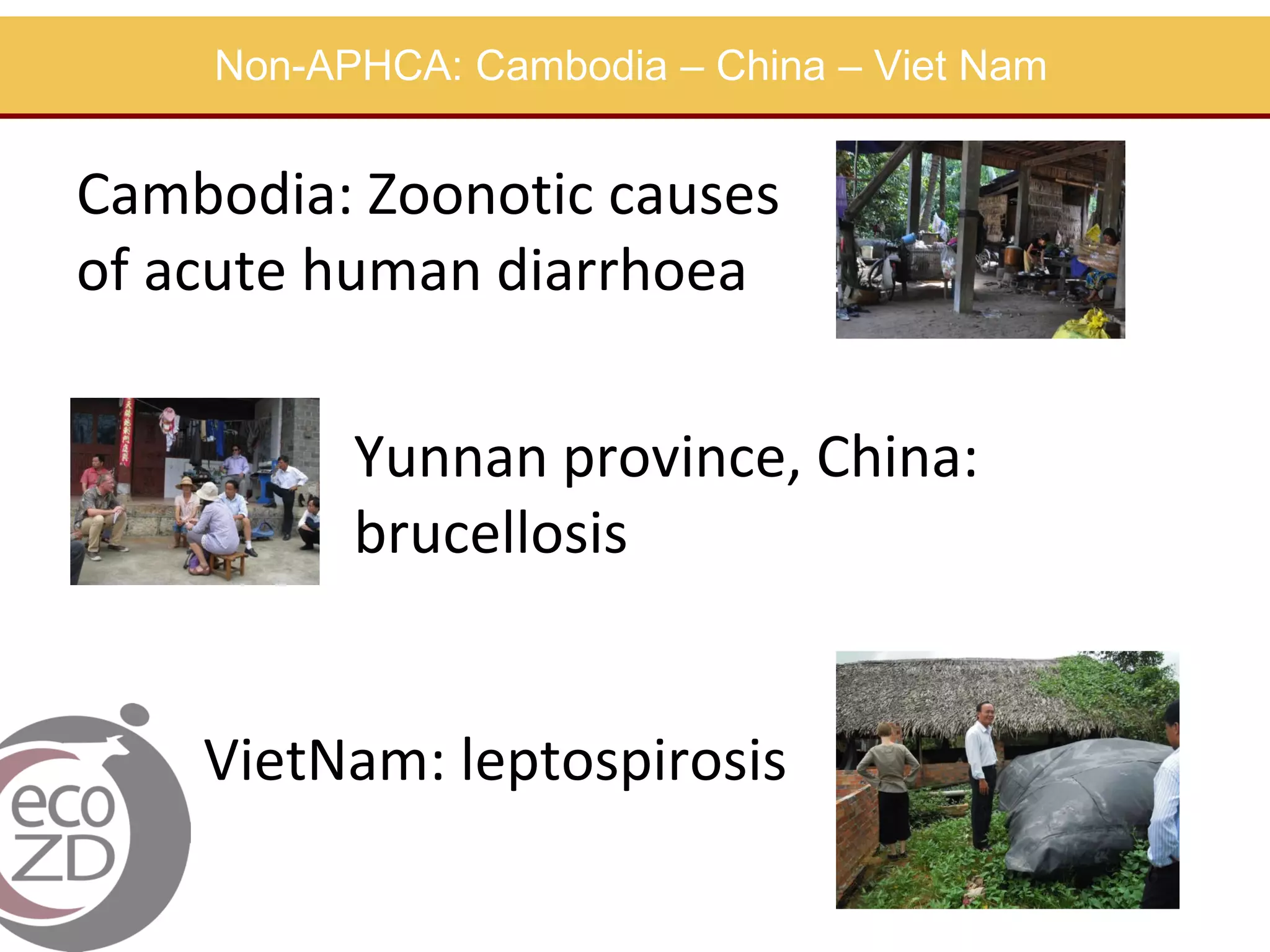The document outlines zoonoses and food safety activities conducted by the International Livestock Research Institute (ILRI) in collaboration with various partners across Asia and Africa. It discusses the burden of zoonotic diseases in different regions, ongoing projects aimed at improving livestock health and food safety, and the impact of interventions in the dairy sector of India. Additionally, it highlights the importance of integrating agriculture, nutrition, and health to enhance the livelihoods of vulnerable populations.






























